A dissection of the notion of luxury, seen through the prism of the V&A's new show
On 25 April, the Victoria & Albert Museum opens a new exhibition, What is Luxury?, exploring and interrogating the concept of luxury and its cultural cachet. With over 100 objects – from mechanical timepieces to Iris van Herpen’s laser-cut haute couture – it offers a wonderfully diverse range of seemingly disparate objects, united by their role in a nuanced exploration of what the term means. What is particularly interesting about the range of items on offer is that they extend beyond a conventional understanding of the luxury market and, rather than focusing on a fashion-led aesthetic, the exhibition incorporates pieces like chandeliers made from dandelions and human hair set in resin to inform a broader conversation, questioning what luxury truly means in a world saturated by the term.
As co-curator Leanne Wierzba explains, "luxury isn’t something new, it's as old as civilisation, but in the exhibition, we argue that it is a particularly prescient topic at the moment because it’s so much a part of the vocabulary of our time." With everything from fashion houses to soap employing a rhetoric around luxury, exclusivity and authenticity, Wierzba and her fellow curator Jana Scholze challenge our perceptions of what the term might actually mean in an increasingly fast-paced, instant-access consumer culture. Here, Wierzba talks us through some of her favourite pieces on show.
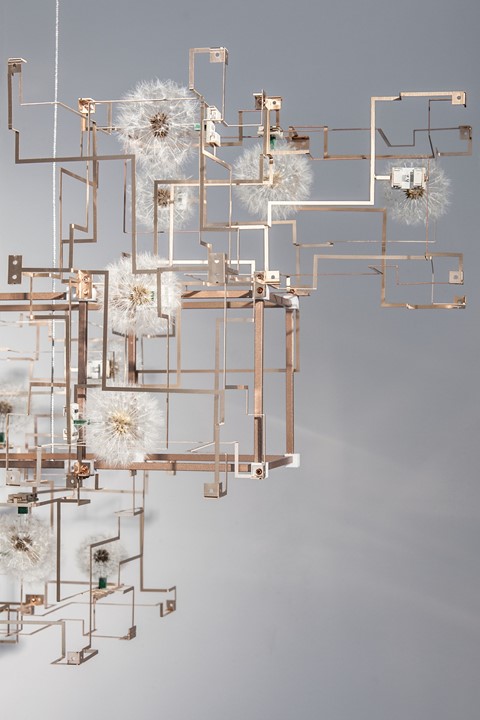
Fragile Future Chandelier by Ralph Nauta & Lonneke Gordijn and Jellyfish Installation by Steffen Dam
"The first section of the exhibition has a focus on the making, on craftsmanship, on motifs and motivations of luxury. Within that, we compared two objects under one term to create juxtapositions, commenting on how there are multiple interpretations of any definition of luxury. Under the term Extraordinary, we have Steffen Dam’s jellyfish and a Fragile Future chandelier featuring real dandelion heads."

"What we though was so interesting about these two pieces together is that they both use nature as a motif. The chandelier uses real dandelion seeds that have been individually harvested and it’s quite extraordinary thinking about all of the time that was invested and the research that went into producing the dandelion seeds – for example, if they were harvested at a certain time then they were a little more yellow. And the jellyfish installation uses no natural materials; it’s an illusion of nature created out of silver foil, carbon and glass."
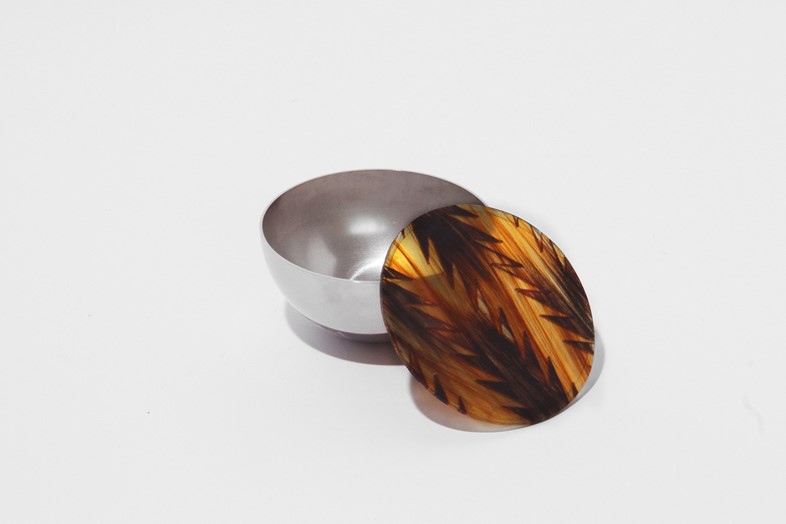
Studio Swine, Hair Highway
Studio Swine are a conceptual design group who started experimenting with their Hair Highway project in 2001. An assortment of their pieces, from their large-scale, art-deco dressing table to their boxes and combs, are on display at the exhibition and, while their appearance conjures an assumption that they are made from tortoiseshell or maybe an exotic wood, on closer inspection they are actually created with human hair set in resin.
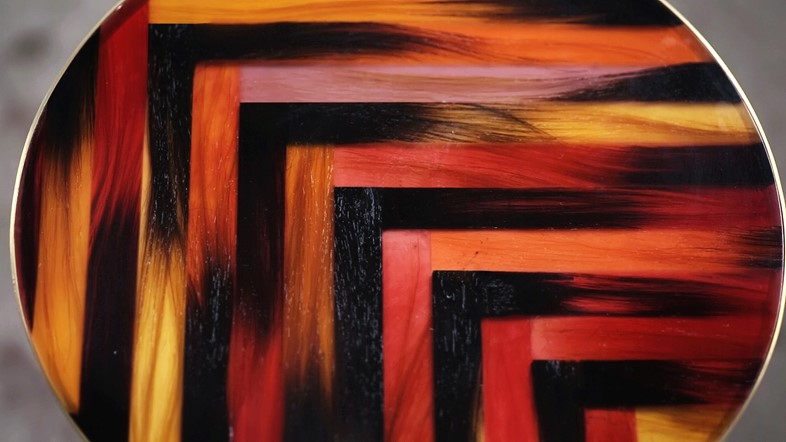
As Wierzba explains, "The argument around the project is that, as the human population continues to grow, we have an increasingly exhausting impact on our natural resources and one of the few that will continue to flourish is anything related to human growth – in this case, human hair. When you get up close, you can really see the strands of the hair that have been combed through the resin. Some people get really disturbed by that, which is particularly interesting when you consider that authentic materials have a real cachet in the luxury sectors – and, for example, you'd never want synthetic hair extensions. I think that, in the 20th century, arguably because of the emergence of so many synthetic materials, we have become completely divorced from the idea that anything we consume can actually come directly from nature, from an animal or from death or harvesting. This project forces us to address that, in a beautiful and poetic way."
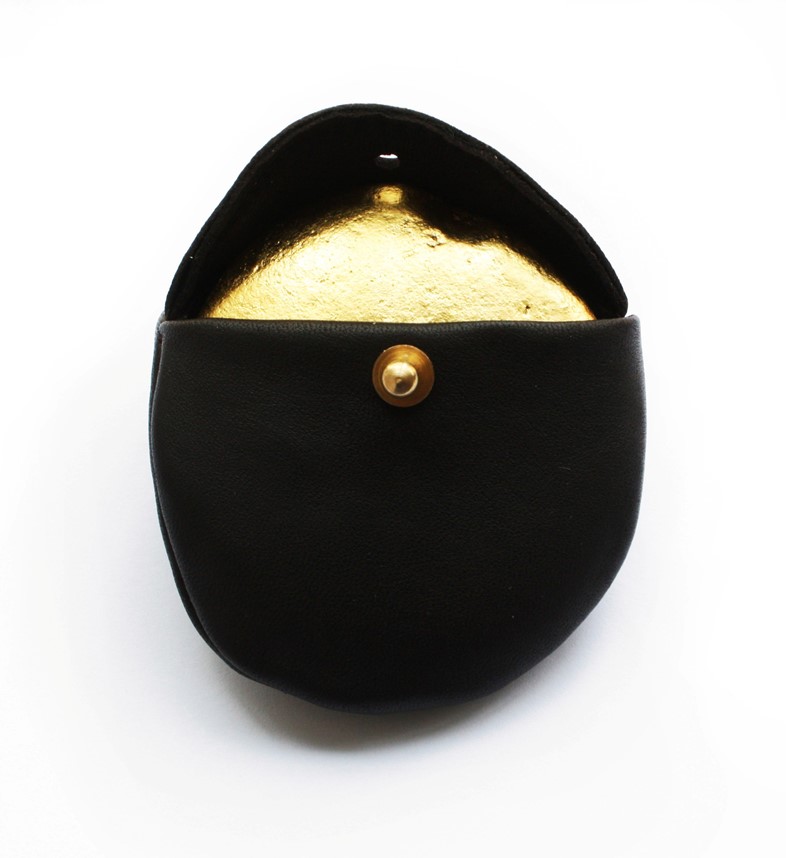
Dominic Wilcox’s Luxury Skimming Stones
"Another one I really love is Dominic Wilcox’s Luxury Skimming Stones, which is a great commentary on value, and values that aren’t related to the material gold but rather to the memories and experience of a simple and humble pleasure like skimming a stone. The stone itself is a regular stone that has been found in nature, identified for its ideal skimming properties like its flatness, but then it’s been covered in gold leaf and Dominic made pouches customized to the shape of each individual stone. It talks about so many things about luxury: that it’s not about the cost of something, it’s about how you value it. And it’s a fleeting thing; the principle of a skimming stone is that you throw it away! Would you throw it away, would you hold on to it… it really questions ideas of value."
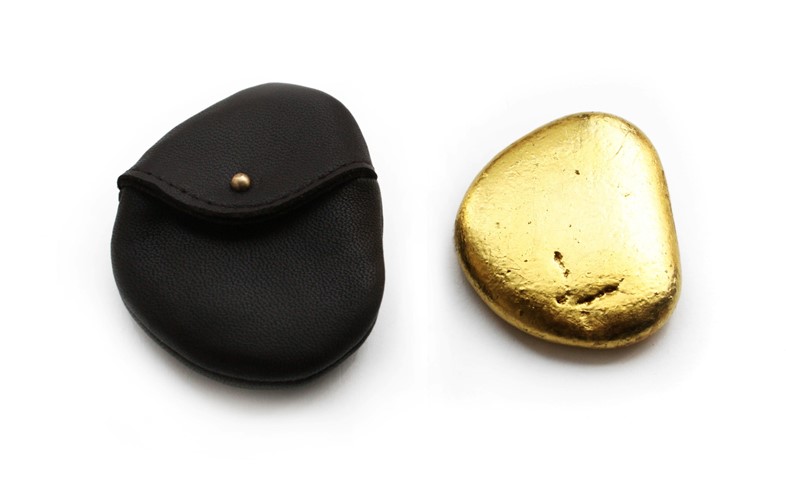
What Is Luxury? opens at the Victoria & Albert Museum on 25 April, in partnership with Crafts Council and sponsored by Northacre.
